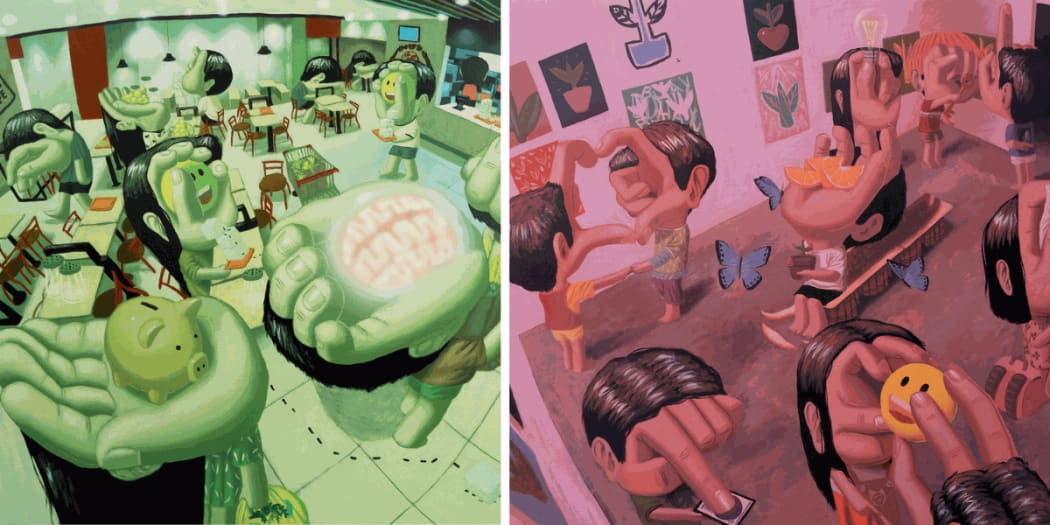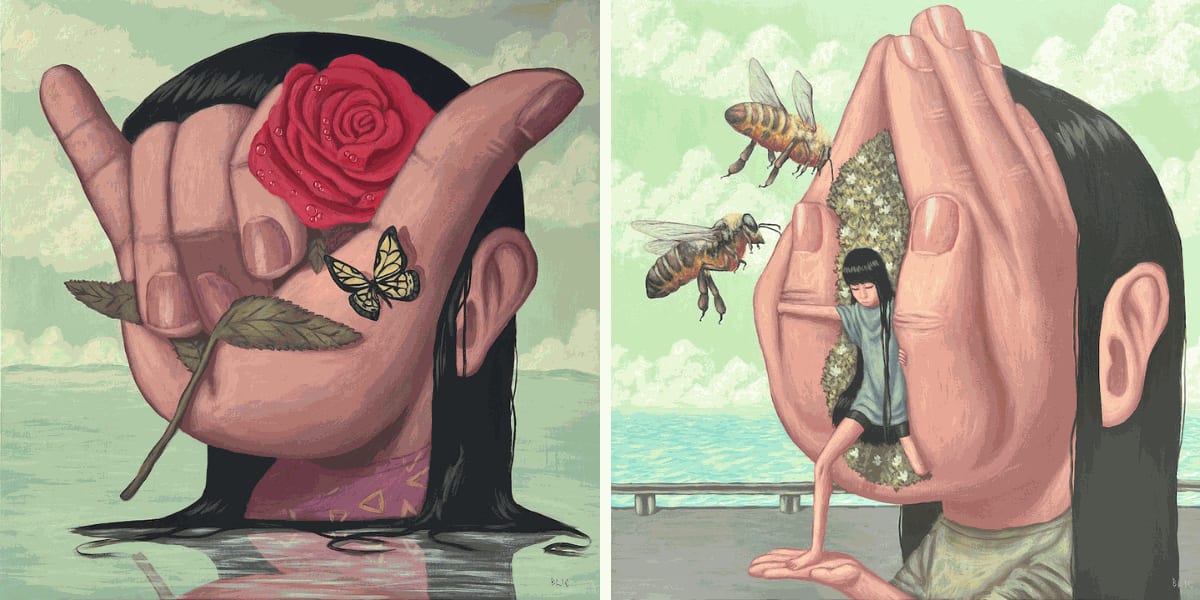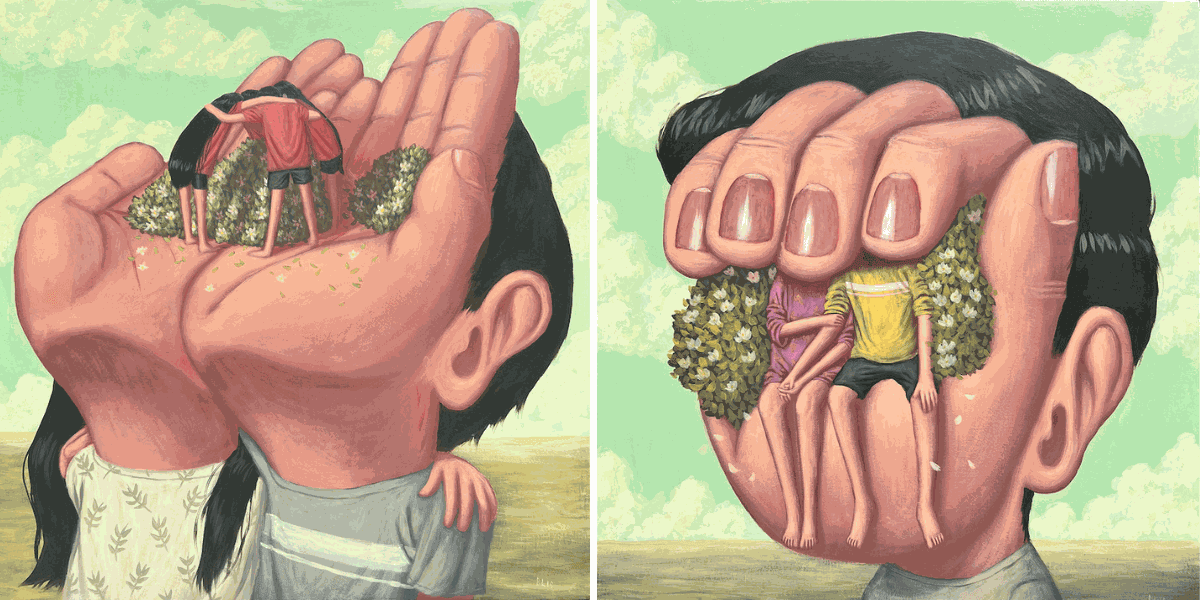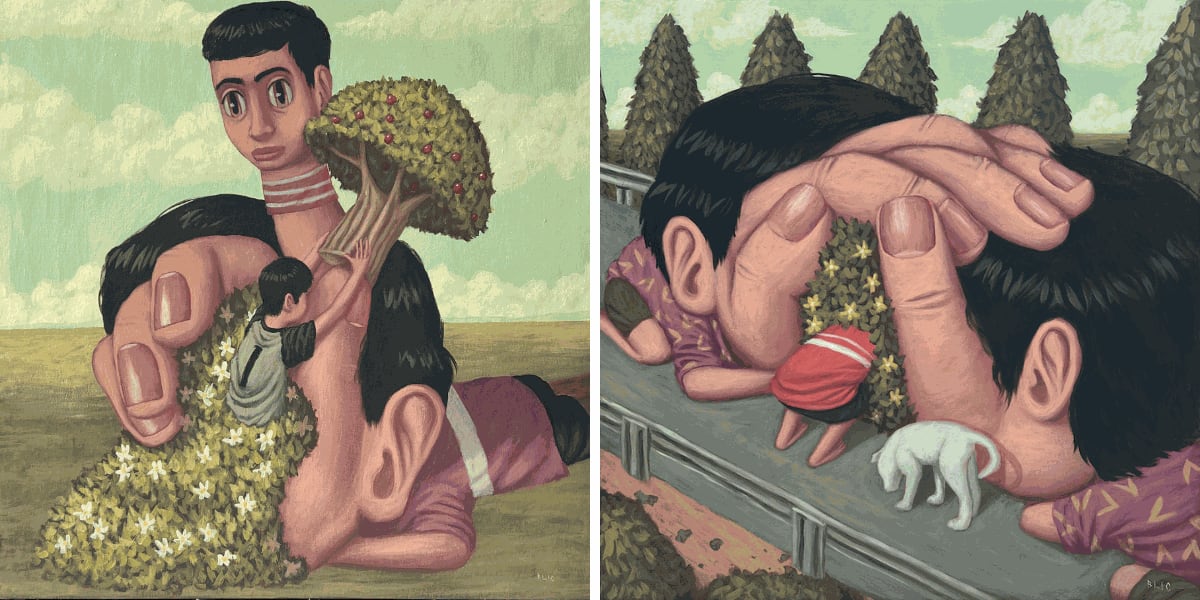

1 - Your exhibition is entitled "Spirit of Time." How do you imagine the spirit of time if you could visualize it or draw it and make it one of your characters? What would it be like, what movements would it perform, and what direction would it take?
If we're talking about the spirit of our current time, I would say human heads that spells out the word “Time” inside a dark cargo van of a six wheeler truck that has a lot of sacks in it where they lay and rest while using their gadgets as their means of entertainment while spending time. This represents the importance of modern technology today that even in darkest of times there is a light that can save us, and also the truck moves forward telling that time is progressing and we need to keep up to strive.

2 - As a mentor for a group of artists and a leader in a street art collective, how would you describe the artistic scene in the Philippines? How do life, culture, and art intertwine in your experiences and the experiences of those around you?
As a self-taught artist, the art scene in the Philippines has greatly contributed to my understanding of the complex and colourful life of an artist. Here, I realized the heavy responsibility of being an artist, not only to myself but also to others. Our art scene is very diverse, and I can say that we keep up with the times. It is very intellectual and rich in morals.

3 - In Asian culture, the theme of animism is prevalent, giving each object its own soul and life. In your paintings, you emphasize the humanization of hands. How much of this inspiration comes from animism, and how much is inspired by body language and communication? Does sign language also play a role in your work?
I never heard about animism, and I'm surprised to see how much my work is connected to it. The personification of my hands emphasizes the power they hold. They come to life and become almost human because, to me, their existence is nearly as important. Humans are creators of change, communicators, and expressive beings, just like my hands. Even though they look quite weird, I always try to make them simple and relatable. I use well-known gestures and even sign language to better connect with those who see my work.

4 - Is there a primary color in your artistic production that reflects your vision? How do you choose colours for your artworks, and what does the combination of pigments mean to you in relation to the subject you're painting? Can you explain the mood and vibe conveyed by the colours in this series, such as green, magenta, and yellow?
For me, I am a storyteller, so it's essential for me to have a piece that speaks. To share the message effectively, my visual narrative must be compelling. The key factor in achieving this is capturing the feeling or emotion I want to convey, and the one element that amplifies this is color.
That's why, in my series for the show, the color depends on the message I want to communicate. For green is like a poison or something that is toxic, and magenta as being energized or chaotic then the yellow as being hopeful or alive.

5 - Considering the international art market, how do you view its future, especially for artists in a developmental phase of their careers? What challenges do you face in establishing your work within a vibrant and competitive art market influenced by major powers?
Getting noticed and recognized is the hardest part. Having your voice heard and earning people's trust is challenging. For me, the more I refine my work and mature in my art-making, the more certain I am that I will achieve my goal. Right now, I am comfortable with my position in the international scene and I can feel its competitiveness. Nonetheless, I am laser-focused on what I produce in my pieces, striving to be the best painter I can be.

6. In this series, there seems to be a notable shift in perspective, with scenes appearing more zoomed out compared to the close-ups of your earlier works. What inspired this change, and which past artworks influenced you? What daily life narratives have you decided to prioritize in this new series?
When I was studying art-making, Hieronymus Bosch and Pieter Bruegel were major influences on me. I was deeply in love with their ability to create a narrative within a larger narrative. Their storytelling was so extreme and compelling when you delved into it. However, because I wasn't yet a skilled painter, it wasn't the right time to try that style. I did attempt it once, but it wasn't quite enough. Now, I feel the perfect timing because I'm very confident in my skills, both in narrative and painting.
My series is based on our familiar experiences and typical situations that I can draw from the current state of the times, such as modern technology and convenience.


